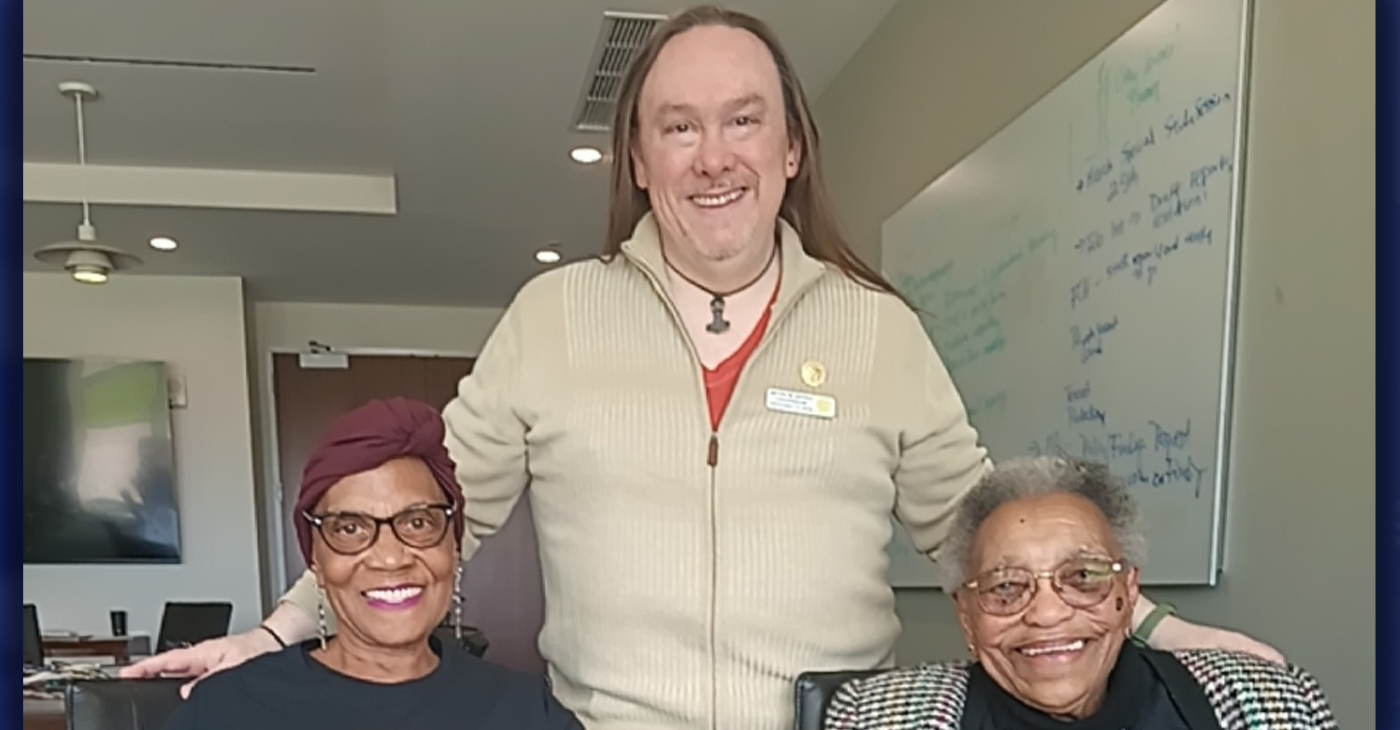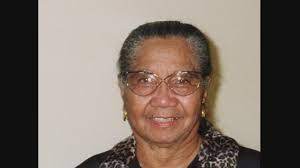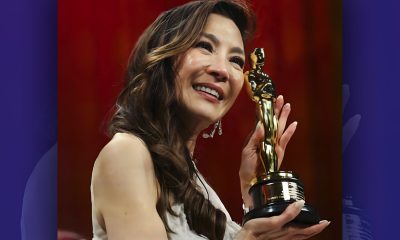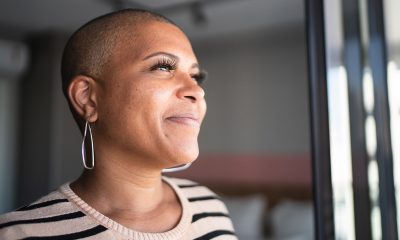Entertainment
Oscar Spotlight Draws Attention to Industry Diversity Issue

In this March 2, 2014 file photo, Lupita Nyong’o accepts the award for best actress in a supporting role for “12 Years a Slave” during the Oscars in Los Angeles. (John Shearer/Invision/AP, File)
JAKE COYLE, AP Film Writer
NEW YORK (AP) — It was a year ago that Lupita Nyong’o, shortly before winning the Academy Award for best supporting actress in “12 Years a Slave,” gave a speech about what she called “dark beauty.”
Nyong’o, who so dazzled Hollywood and the Oscar-viewing public through awards season, spoke tenderly of receiving a letter from a girl who had been about to lighten her skin before Nyong’o’s success, she said, “saved me.” The letter struck Nyong’o because she recognized herself in that girl: “I remember a time when I too felt unbeautiful. I put on the TV and only saw pale skin.”
The Mexican-born, Kenyan-raised actress was a central part last year to an Academy Awards flush with faces uncommon to the Oscar podium.
What a difference a year makes.
This year’s Oscars repeat a stubborn pattern that has plagued the Academy Awards throughout its history: Whenever change seems to come, a frustrating hangover follows. “Every 10 years, we have the same conversation,” Spike Lee, a regular witness to the sporadic progress, has said.
Seldom have such fits and starts been starker than this Oscars, coming a year after a richly diverse Oscar crop. In Sunday’s Academy Awards, all 20 acting nominees are white, a result that prompted some to declare that they would boycott this year’s ceremony.
The lack of nominations for “Selma” director Ava DuVernay and star David Oyelowo were a particular flashpoint, viewed by many as unjust oversights not only because they merited honoring, but because their absences furthered an ignoble Oscar history.
“I was surprised but then I wasn’t,” said Darnell Hunt, a UCLA professor and director of the Ralph J. Bunche Center for African American Studies, who co-authored a 2014 diversity report on the film and TV industries. “What we saw in terms of the nominations this year was business as usual. What we got was more or less an accurate reflection of the way the industry is structured and the way the academy is populated.”
An Associated Press survey of the academy’s voting history since the first Academy Awards in 1929 shows gradual progress but not nearly at a rate to match the ever-increasing diversity of the American public. In those 87 years, 15 black actors have won Oscars, four Latinos and three Asians, a record that doesn’t even speak to other categories like best director, where only one woman (Kathryn Bigelow) has won.
The number of non-whites to be nominated for best actor or best actress has nearly doubled in just the last two decades, but the 9.4 percent of non-white acting nominees over the academy’s history is about four times less than the percentage of the non-white population.
Not all of this can be laid at the film academy’s feet, but some of it can. The 6,000-plus membership of the Academy of Motion Pictures Arts and Sciences was found to be 94 percent white and 77 percent male in a 2012 Los Angeles Times investigation.
Since becoming president of the academy, Cheryl Boone Isaacs has worked to diversify the organization’s ranks, though change comes slowly considering membership is for life.
But the academy is a reflection of the film industry; it can only reward the films that get made. What this year’s all-white acting nominees did was lay bare the enormous, hulking iceberg of the movie business’ diversity problems.
The UCLA diversity report released last year after eight years of research put found underrepresentation of minorities and women throughout film and TV, from board rooms to talent agencies.
“White males have dominated things for so long that it’s been hard to image an alternative that would produce or be open to producing the types of projects that are likely to enlist more people of color or women. So it becomes a self-fulfilling prophecy, this vicious cycle that produces the same type of stuff over and over again,” says Hunt.
What’s particularly galling for many of those working to change Hollywood is that minorities are among its most passionate customers.
“They acknowledge the demographic. They understand our participation rate. They continue to market these projects to the community, but never with the community’s identity or building a base of A-lister talent,” says Felix Sanchez, president of the National Hispanic Foundation for the Arts.
Hunt hopes that by studying diversity objectively, the data will reveal “the bottlenecks” that are stifling advancement. That includes findings that show more diverse projects make more money at the box office and earn better TV ratings. He knows the one thing Hollywood will respond to: the bottom line.
But frustration is mounting. Another year’s worth of research, to be released later this month by UCLA, shows no significant change, says Hunt.
Stacy L. Smith, founder and director of USC Annenberg’s Media, Diversity and Social Change Initiative, calls the lack of progress in the industry “egregious.”
“Hollywood does not think diversity is commercial,” Smith said. “The numbers speak loudly and clearly about who is valued and who isn’t.”
With studies finding so little progress, Smith proposes the industry adopt a modified version of the NFL’s Rooney Rule, which stipulates that teams must interview minorities for vacant coaching jobs.
Not everyone agrees. “Enforced ‘diversity’ will undermine the very mission of (the academy),” wrote Lionel Chetwynd, an Oscar-nominated writer and an academy member. “As new filmmakers and craftspeople achieve new levels of excellence, the face of the academy will change as it should, to the meter of its time, the pace of its art.”
Why does all this matter? It isn’t just an issue of equal opportunity, though it is that. It’s because when people aren’t reflected in culture, when they don’t see themselves on screens, behind cameras or on the Oscar stage, they feel invisible and voiceless. Hollywood would do well to remember that young girl who wrote to Nyong’o, and hope to inspire a flood of such letters.
___
AP researcher Jennifer Farrar contributed to this report.
___
Follow AP Film Writer Jake Coyle on Twitter at: http://twitter.com/jakecoyleAP
Copyright 2015 The Associated Press. All rights reserved. This material may not be published, broadcast, rewritten or redistributed.
Activism
Richmond Seniors Still Having a Ball After 25 Years
The Senior Winter Ball is a symbol of the Commission on Aging’s broader mission of providing enriching life experiences to the local senior community, particularly those in need of them. “Besides the social activities, we focus on issues such as housing, transportation and health,” said Michelle Hayes, the commission’s chairperson. “We get things done for our senior population.”

By Mike Kinney
The Richmond Standard
For a quarter century, seniors in the local community have had a prime location in the heart of the city to gather and celebrate the holidays.
That is courtesy of the annual Senior Winter Ball, which will mark a milestone this year when it takes place for the 25th time. The gala will run from 6 p.m. to 10 p.m. at Richmond Memorial Auditorium.
The holiday tradition was started by the City of Richmond’s Commission on Aging in 1999 to entertain and celebrate seniors. The event also raises funds for local senior causes. Attendees wear their finest attire and enjoy dinner and dancing.
“It’s so exciting to see all of the gala attendees all dressed up and seeing their lifetime friends and making new friends as well,” said Bryan M. Harris, secretary for the Commission on Aging. “They will reminisce about old Winter Ball memories and at the same time create new ones.”
Richmond’s very own Chef Josephine Orozco of El Sol Catering will serve at this year’s anniversary dinner. The gala will also feature the band Top Shelf Classics, which plays hits from the 50s through the 80s and has been the gala’s annual performer for the last decade.
The Senior Winter Ball symbolizes the Commission on Aging’s broader mission of providing enriching life experiences to the local senior community, particularly those in need of them.
“Besides the social activities, we focus on issues such as housing, transportation and health,” said Michelle Hayes, the commission’s chairperson. “We get things done for our senior population.”
Myrtle Braxton, 97, has served on the commission for 17 years and is its current vice president. She says her goal is to increase the quality of life for seniors through safe social events.
“So many seniors are isolated and are sometimes forgotten by society,” Braxton said. “So, our commission is their advocate and makes sure they are not left behind.”
Tickets to the 25th Silver Anniversary Annual Senior Winter Ball are $45 per person or $360 for a table of eight. They are available in person via the Main Recreation office at 3230 Macdonald Ave., via email at csdregistration@ci.richmond.ca.us or by phone at 510-620-6793.
Activism
Oakland Post: Week of November 20 – 26, 2024
The printed Weekly Edition of the Oakland Post: Week of November 20 – 26, 2024

To enlarge your view of this issue, use the slider, magnifying glass icon or full page icon in the lower right corner of the browser window. ![]()
Activism
Oakland Post: Week of November 13 – 19, 2024
The printed Weekly Edition of the Oakland Post: Week of November 13 – 19, 2024

To enlarge your view of this issue, use the slider, magnifying glass icon or full page icon in the lower right corner of the browser window. ![]()
-

 Activism4 weeks ago
Activism4 weeks ago‘Jim Crow Was and Remains Real in Alameda County (and) It Is What We Are Challenging and Trying to Fix Every Day,’ Says D.A. Pamela Price
-

 Bay Area4 weeks ago
Bay Area4 weeks agoIn the City Attorney Race, Ryan Richardson Is Better for Oakland
-

 Activism4 weeks ago
Activism4 weeks agoOakland Post: Week of October 30 – November 5, 2024
-

 Alameda County3 weeks ago
Alameda County3 weeks agoD.A. Price Charges Coliseum Flea Market Vendors in Organized Retail Theft Case
-

 Activism4 weeks ago
Activism4 weeks ago‘Criminal Justice Reform Is the Signature Civil Rights Issue of Our Time,’ says D.A. Pamela Price
-

 Activism2 weeks ago
Activism2 weeks agoLIVE! — TOWN HALL ON RACISM AND ITS IMPACT — THURS. 11.14.24 5PM PST
-

 Bay Area3 weeks ago
Bay Area3 weeks agoOakland Mayor Sheng Thao’s Open Letter to Philip Dreyfuss, Recall Election’s Primary Funder
-

 Activism4 weeks ago
Activism4 weeks ago“Two things can be true at once.” An Afro-Latina Voter Weighs in on Identity and Politics
























































